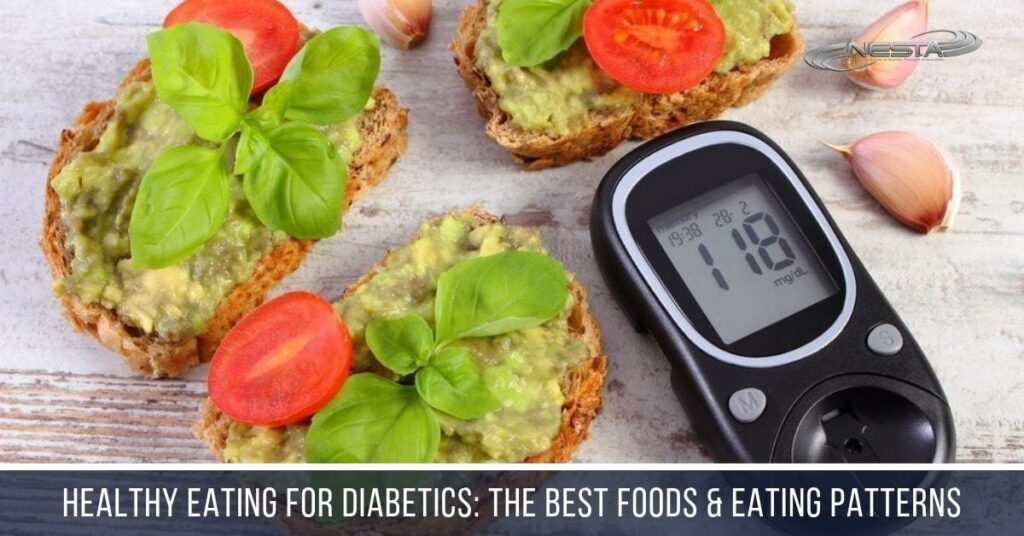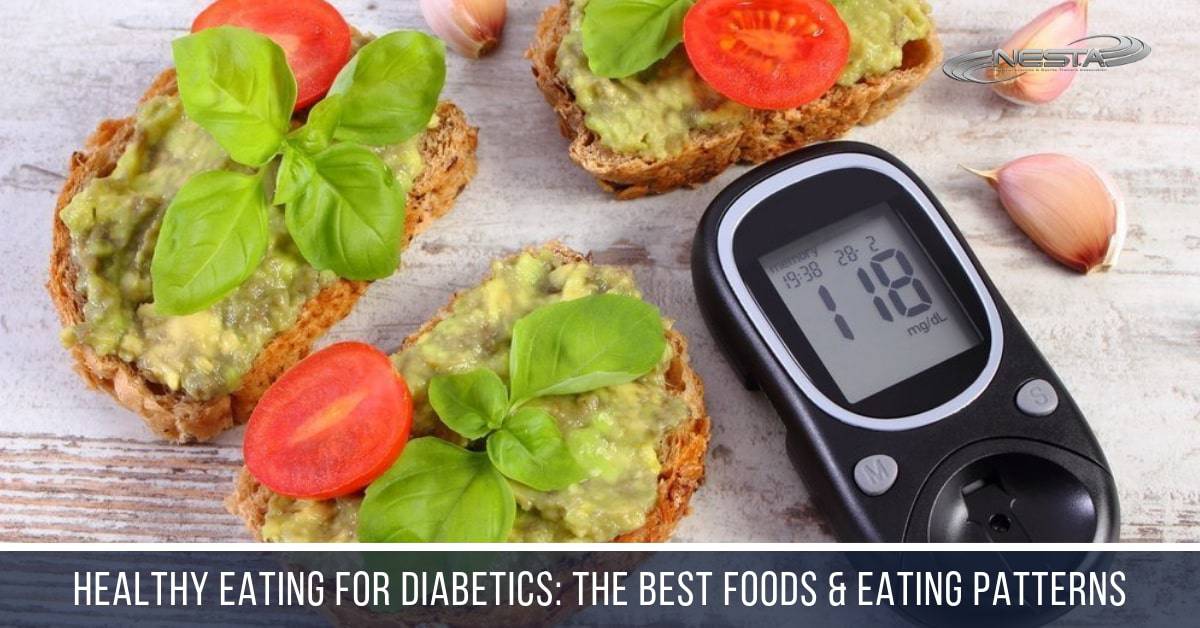If you have recently been diagnosed with diabetes, you must start making changes to your diet plan. This can be confusing, but we’re here to help you navigate through it.
Let’s start on a positive note and take a quick look at the foods that are great for you. Truth be told, even people without diabetes should try to maximize these!
Fatty fish
Although counterintuitive, fatty fish is extremely healthy and nutritious. These fish have the omega-3 fatty acids DHA and EPA which are great for the heart. They also contain high amounts of protein that increase your metabolic rate, keep you full and reduce the risk of cardiovascular disease.
Leafy greens
Leafy greens are essential in salads and contain lots of nutrients and fibers, keeping you full for longer. Leafy vegetables also contain vitamin C and minerals such as iron, and some contain high levels of antioxidants too. You can make great salads and soups with them, filling up your stomach without increasing blood sugar.
Cinnamon
As a sweet-toothed diabetic, getting that sugary kick might be difficult, but possible. Cinnamon imparts sweetness to the food and is a good sugar replacement. It is also an ingredient high in antioxidants and helps control blood sugar and cholesterol.
Eggs
Eggs are great sources of proteins and keep you feeling satiated for long after meals. They contain nutrients that reduce the risk of coronary diseases and improve insulin sensitivity. Eggs also contain lutein and zeaxanthin that are great for the eyes.
Greek yogurt
As a diabetic person, some types of dairy bad because of high sugar and fat content. Greek yogurt is an amazing option that also aids weight loss. It improves blood sugar control and reduces cardiovascular disease risk, probably due to the high level of calcium and fatty acid content.
Nuts
Nuts are great sources of fats and proteins and are also rich in vitamins C and E. They also contain omega-3 fatty acids, which are good for the body. The best part is that nuts are very handy and make for healthy mid-meal snacks.
However, they are very calorie-rich and it is important to keep their intake under control. You can eat a handful during breaks or add them to your salads and oats to add that healthy crunch to your food.
Whole Grains
Although you are diabetic, remember that you must eat carbohydrates in moderation. Excluding carbs is unhealthy, and there are healthy carbs that you can choose over others. Whenever possible, choose whole grain products.
These are high in fiber and are complex to break down, ensuring that your body has a regulated amount of blood sugar. Brown bread, brown rice, and whole grain pasta are some great alternatives, but you can even opt for biscuits and cookies that are made from whole grains if they have no sugar.
Ideal Eating Patterns for Diabetics
Diabetic people sometimes find it difficult to regulate their meals and might benefit from planning them out. Meal plans or eating patterns are the same concepts, describing the group of foods you choose to eat daily.
There are some pre-established meal plans that have also been evaluated by the American Diabetes Association, which can help manage diabetes in the long run.
A meal plan ensures that you look after:
- When to eat
- How much to eat
- What to eat
Worry not, meal plans are not scary and bland. They take into account your likes and dislikes and are tailormade to suit your tastes while keeping diabetes under control. Following are some of the many established meal plans that you can select from:
Mediterranean
True to its name, this eating pattern is wholesome and balanced but not lacking in taste. It focuses on using fresh, local produce that is mainly plant-based, with olive oil being the primary source of fat.
Proteins are sourced from poultry, fish and meat, but also from some dairy products. If you like salads, cheeses and nuts, this is the perfect choice for you. It helps prevent heart disease, stroke, and some types of cancer, but it has also been known to help regulate and balance weight.
Vegetarian and Vegan
We’ve already outlined the importance of leafy greens for you as a diabetic person. Add to that the high amount of fiber and a low amount of sugar that vegetarian diets have, and this can be a very rewarding diet plan.
For this plan, there are hardly any animal sources of food, and these are substituted with plant-based products. Proteins are obtained from beans and tofu, and fruits and vegetables keep the dietary fibers high.
Diabetic people benefit from high fiber levels and low digestibility that keeps blood sugar under control. People who follow this diet have lower levels of obesity and better BMI. They also have reduced risk to heart disease and cancer.
Low Carbohydrate
You have probably already been told that carbohydrates elevate blood sugar and must be consumed in moderation. A low carbohydrate pattern focuses on avoiding excess carbs, replacing them for non-starchy vegetables like broccoli, kale and salad.
As in vegetarian diets, proteins are derived from beans, but also from poultry and fish. This diet plan avoids foods and fruits that are rich in sugar, such as sweets, mangoes, bananas, potatoes, rice, pasta and honey. The lower consumption of carbs leads to lower blood sugar levels, which is great for a diabetic person.
Low Fat
While we are about reducing consumption, lower fat diets are also effective. These diets focus on eating vegetables and lean protein such as chicken and turkey, fish and selected dairy products. Carbohydrates are not especially well-regulated, but if you are trying to control your weight, this might be an alternative to consider.
People who follow this diet have improved heart health and overall body tone. As a diabetic person, you might want to combine this with one more meal plan, as this one is great at maintaining body fat levels.
DASH
The term DASH stands for Dietary Approaches to Stop Hypertension and has become very popular as of recent times. It was designed to help people with hypertension or high blood pressure, as they suffer from a high risk of cardiac arrest.
The primary focus is on maintaining arterial health, and as a result, it promotes a higher intake of vegetables, fruits, whole grains, and low-fat products. Very salty or sugary foods are not allowed, ensuring that the blood composition remains optimal.
This plan is great for lowering blood pressure since it is high in fiber and potassium, calcium and magnesium. These are holistic benefits that are great even for diabetics.
Plate Method
If you are new, the plate method is a good place to start. This helps control portion sizes without being calorie-conscious. Take a 9-inch plate and place non-starchy vegetables on half of it. Place a protein on one-fourth and starch on the area left.
Take a small bowl and place a low-sugar fruit in it, or replace the bowl with a glass of milk. This way, you eat a balanced diet without much effort and can slowly graduate to including other meal plans in your daily routine.
Carbohydrate Counting
True to its name and unlike the plate method, carbohydrate counting requires some effort on your part. You need to learn food types to identify which ones contain carbs, then read labels to note what amount of carbs you’ve been eating and lastly, keep track of them.
You can then start limiting your intake and replacing items that are bad, slowly making the switch. This is especially good if you need to take insulin, as the amount of insulin will depend on the number of carbs you consume. For someone who likes to control their diet plan, this is a good option but requires dedication.
Summing it Up
Diabetes is a disease that requires dietary changes and restrictions which can overwhelm you. It is, however, possible to structure your way out if you know what to eat and select a meal plan that suits you. There are several options available depending on your tastes that make the road to a healthy life enjoyable. Eat your way to a healthy life!
How You Can Help
If you want to help clients with food, diet, weight management and improving the results of their fitness routines, the Fitness Nutrition Coach course is for you. You will learn about optimal nutrition, including proven techniques for increasing energy, optimal health and decreased dependence on medications. Instantly increase your job and career opportunities with this popular professional credential.
More than 50% of Americans are overweight. The number is high, and growing in most other countries. We know that obesity is linked to the development of type 2 diabetes. Become a Lifestyle Weight Management Specialist. Help your clients achieve their weight loss or weight management goals using the latest proven strategies.
You can become a Certified Personal Fitness Chef and expand your current personal chef business, or add a new profit center for your fitness or wellness business. Many personal chefs cook and coach people in groups to help more people and earn more money per hour. Some chefs provide weekly meal prep service for health-minded customers and athletes.
Check out what it takes to start a career in personal fitness training. This is your most affordable and fastest way to become a highly qualified personal trainer.
NESTA coaching programs are open to anyone with a desire to learn and help others. There are no prerequisites.
That’s it for now.
Take action!
PS: Click here to see many helpful business/career resources







